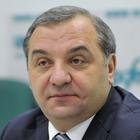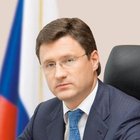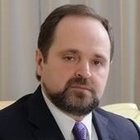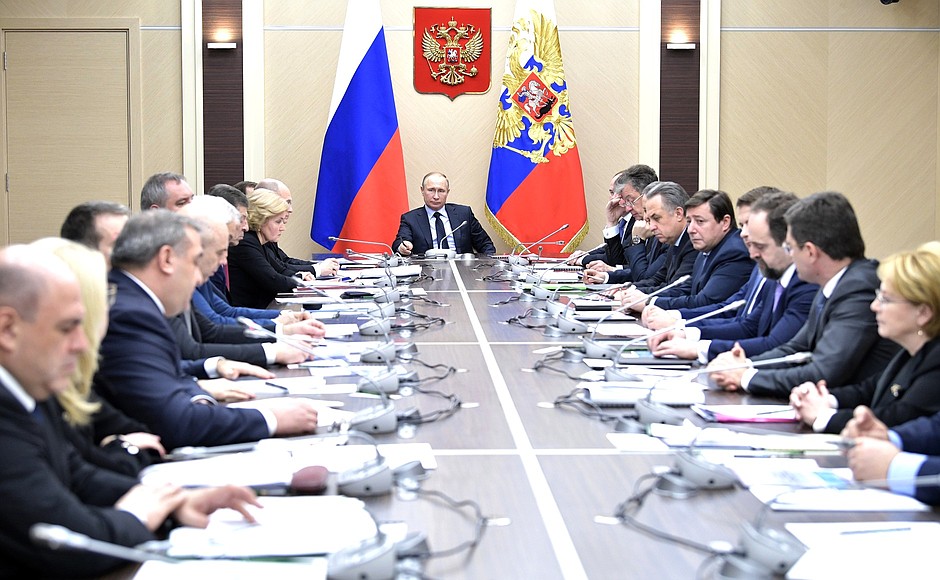
President of Russia Vladimir Putin: Good afternoon.
To begin the meeting, I will ask Mr Puchkov to tell us about assistance to the population during abnormal cold spells and bad weather conditions in a number of Russian regions.
You have the floor.
Minister of Civil Defence, Emergencies and Natural Disaster Relief Vladimir Puchkov: Mr President, colleagues,
Since January 12, extremely low average daily temperatures – from -40C to -68C, wind speeds of up to 36 m/s and precipitation were registered on the territory of 24 regions of the Far East, Siberia and the Ural Region.
During this period the management bodies and forces of the Uniform State System for Emergencies Prevention and Elimination dealt with 10 emergencies, provided relief after household gas explosions, extinguished over 7,000 fires, rendered assistance in over 3,800 traffic accidents and helped over 6,500 people in other mishaps.
The Emergencies Ministry planned and continues implementing a system of additional measures to organise assistance to the population on the territory of the Far East, Siberia, the Urals and a number of other regions.
First, we have made sure that all critical systems are stable and that the operations of all housing and utilities, educational and medical institutions, and socially important facilities are being monitored. The Emergencies Commission was timely in its introduction of high alert and emergency regimes in 22 regions of the Russian Federation. All anti-crisis management structures under the aegis of the National Crisis Management Centre and over 700 operational groups of local government bodies were placed on high alert.
Secondly, a task force to organise the patrolling and closing of federal, regional, and local roads has been organised. There are 175 mobile and over 1,470 stationary heating, food and refuelling stations. Additional mobile technical support evacuation teams were created at 300 potentially dangerous sections of federal motorways, and truck tractors were brought in as well. This made it possible to provide assistance and support.
Overall, more than 230 vehicles have been evacuated, which were stuck in snowdrifts, with 780 people inside. Each one of them received the necessary assistance.
Mobile medical teams are on duty around the clock on all roads. Of course, priority is given to congestion-prone motorway sections. All heating and food stations, as well as ice crossings and winter roads have been lined with appropriate medical brigades.
Based on the forecast of abnormally low temperatures, 65 airborne units of the Emergencies Ministry totalling over 7,000 men were put on high alert. More than 3,500 additional preventive inspections at housing and utilities sites, transport and infrastructure have been planned and carried out. Equipment of the personnel, readiness of technical equipment, reserves of material resources, availability of supplies with all emergency and recovery teams that work, especially at the level of local government bodies, were also checked.
Over 1,700 intercity bus trips were cancelled. The people were informed in a timely manner and provided with necessary assistance. All new issues were resolved quickly and efficiently.
Unfortunately, during this period there were 86 accidents at housing and utilities sites, and we had to make additional decisions in order to provide uninterrupted service to our households. Thanks to the joint coordinated work of emergency services, all accidents were promptly taken care of and, overall, we can say that these days the number of man-made fires and emergencies has gone down, and all interruptions in service for social infrastructure were under control.
Thirdly, targeted preventive assistance was provided to the population during this period, with all social services and emergency commissions of local government bodies up and running. Particular attention was paid to large families, students, teachers, veterans and elderly people, as well as socially vulnerable groups and people with low mobility. Overall, this made it possible to provide assistance for the specific needs of all these groups.
In addition, extra inspections were conducted in all regions with abnormally low temperatures, all privately owned houses with stove heating, especially disadvantaged households, were put on special monitoring. In some regions, there were weather-related school cancellations at 3,300 schools, and employers were asked to provide leave to parents to make sure that children are not left home unattended. In 16 regions, corresponding announcements were made in advance, and students attended schools at their parents' discretion.
A powerful task force totalling 575,000 people, the appropriate equipment and tools were used to carry out all the work. The management bodies coped with all the tasks, which made it possible to ensure steady operation of all critical systems. Taking into account the weather forecast, the Emergencies Ministry management bodies and forces continue working. We beefed up all the units on duty in central Russia. Over 20 regions were hit by snowfall. All power lines, and federal and regional motorways are being monitored; 540 heating stations and mobile groups were deployed and, of course, people are being informed about weather forecasts and rules of behaviour in these circumstances. All necessary measures are being taken.
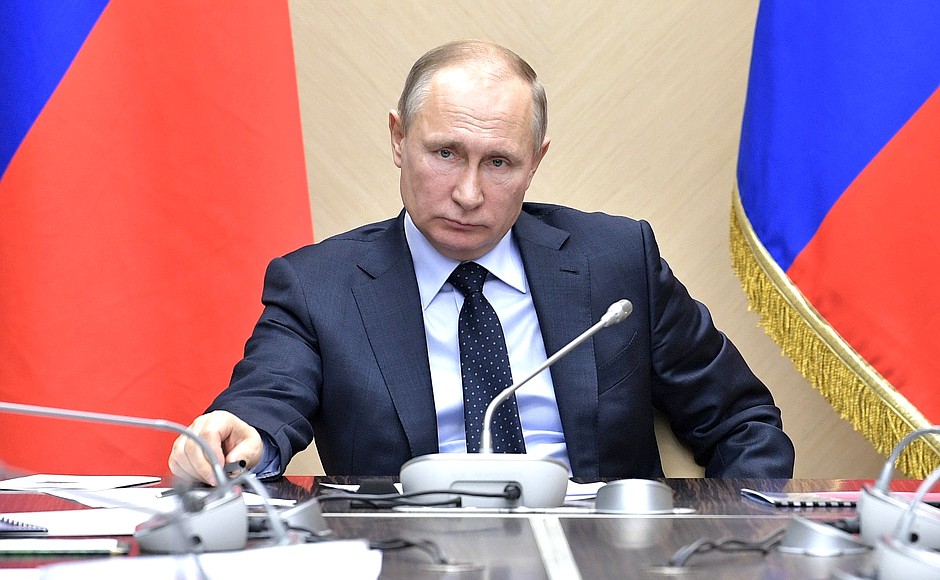
Mr President, I report that the administrative bodies and forces of the Uniform State System for Emergency Prevention and Relief continue their work, have been properly winterised, and stand ready for any weather.
Vladimir Putin: I see.
And how are power facilities faring, Mr Novak?
Minister of Energy Alexander Novak: Mr President, Mr Prime Minister, colleagues,
On the whole, during this autumn and winter period, all electric power facilities have been operating in routine mode. There are no significant criticisms of our electric power companies, generating companies or grid companies. No major technological disruptions have occurred. Local technological disruptions are promptly remedied by emergency crews.
We also monitor the situation at all companies, generation facilities above 25 megawatts and electricity mains. Compared with last year, the total drop in technological disruptions is 17.4 percent this autumn and winter.
We also monitor the average duration of power outages. I can state that over the last three years the average outage duration has dropped by 40 percent. In the past the average was one hour and 40 minutes and now we have reached the target of one hour. This is the average, of course and there are some deviations from that.
Currently 48,000 staff, 23,000 units of equipment and 4,500 backup power sources are on full alert. Compared with last year, the increase in resources for remedying technological disruptions went from five to 20 percent, depending on the region.
As for fuel, our generating facilities are also provided with backup fuel sources. Reserves exceed requirements by more than half. In those places where reserves drop below what is mandated for a short time, we take prompt action together with constituent entities of Russia to replenish reserves in short order.
It is also worth pointing out that some regions faced really difficult situations as a result of extreme temperatures, blizzards, high winds and snowfall. This caused technological disruptions in the Far East, on Sakhalin, in Dagestan and the Chechen Republic, but still all required steps were taken to transfer emergency crews from the neighbouring regions to promptly remedy technological disruptions.
The federal and regional headquarters are all operating. On the whole, we are monitoring the situation. There were almost no technical violations in Rosseti networks even during the recent New Year’s holidays. On January 28–29, there were blackouts in the Chechen Republic: about 200,000 consumers lost power. In the first case the power was restored in three hours, in the second case, in a little over an hour.
Vladimir Putin: Thank you.
The Government drafted amendments to the Forest Code and a number of other laws on forest reclamation. Every year we sustain irreplaceable losses – about 145,000 hectares during the implementation of infrastructure projects and forest clearing. Another 5,000 hectares are lost during felling for timber harvesting. Mr Donskoy, tell us about this, please.
Minister of Natural Resources and Environment Sergey Donskoy: To begin with, I would like to say that today any forest felling evokes a strong public reaction because forests are a part of nature that has direct bearing on the quality of life. Both public and environmental agencies regularly address the ministry and you. Recently this issue has been raised at news conferences, during the Direct Line, and at meetings with activists of the Russian Popular Front. You said that every year about 145,000 hectares of forest are cut down on the average, during infrastructure projects with linear facilities and about 5,000 hectares of forest are withdrawn from the Forest Fund for the expansion of residential areas. We realise that under current legislation these are irreplaceable forest losses. Mr President, in this context we included in our proposals compensation procedures for forest restoration under a basic principle: if one hectare of forest is cut down, one must be restored. This is a tough principle that will have to be complied with by all those who deal with linear facilities and forest felling.
At the same time, we would use this draft law to substantially upgrade the quality of forest restoration. It sets qualification requirements for operators – sufficient machinery and equipment, enough forest seed and planting stock. By now these proposals have been coordinated with everyone and our task is to introduce them as soon as possible.
I would also like to recall that previously, in accordance with your instructions, we also significantly bolstered the ability of citizens to independently decide the fate of forests in densely populated areas (so-called green zones). Today, forest and green belts are being created. More than 53 regions actively joined this work. Currently, ”green shields“ have already been created in eight regions of the Russian Federation.
At the same time, we understand that the forest is an economic resource that must be put to commercial use. In 2017, a record was set for the past 20 years in timber harvesting: about 216 million cubic metres were produced. But at the same time, last year forest regeneration was carried out on an area of more than 953,000 hectares, which exceeded the area of felling. That is, we have completely restored everything that was cut down.
I would also like to report that in 2018 new rules for forest management, developed jointly with civic organisations, come into effect. Their implementation will improve the commercial characteristics of the Forest Fund and also introduce a model of intensive forest regrowth.
Thank you.
Vladimir Putin: Fine, thank you.
When will these amendments be introduced?
Sergei Donskoi: We want to work it out together with the State Duma in the spring.
Vladimir Putin: Good, thank you.
Let us now hear from Ms Skvortsova about the introduction of information systems in medicine provision.
Minister of Healthcare Veronika Skvortsova: Mr President, Mr Prime Minister and colleagues,
In your Address to the Federal Assembly, you set the task of actively using information technologies for more effective oversight of the market of critical medicines. Following your instructions, in order to optimise the prices of medicines purchased for state and municipal needs and, in general, to improve medicine supply, the Ministry of Healthcare together with the state corporation Rostec, the Federal Service for Supervision of Healthcare, the Ministry of Finance, the Federal Treasury and the Federal Anti-Monopoly Service implemented a project to create an information and analytical system of monitoring and control in the procurement of medicines. The system is designed to analyse purchases in terms of customers, suppliers, manufacturers for each INN (international non-proprietary name) and each trademark, establishing reference prices for homogeneous groups of medicines and recording deviations from them.
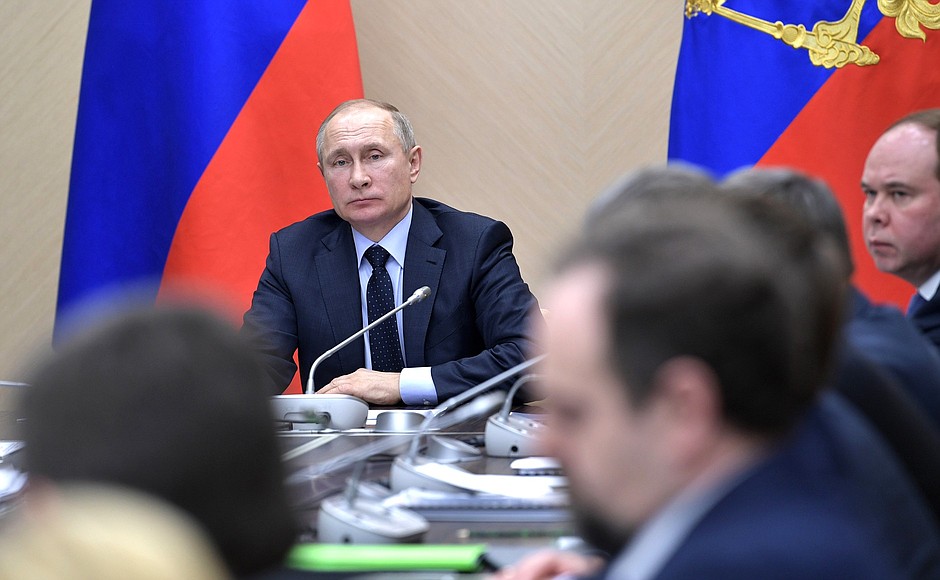
Based on technical requirements developed by the Ministry of Healthcare and approved by the Government Commission on Information Technology and Rostech State Corporation, an information and analytical system using domestic and free software was developed and deployed at the computing facilities of the Ministry of Healthcare. This was done without public funds.
(The Minister then covered matters related to creating an information and analytical system, in particular, creating an appropriate legal framework, the Single End-to-End Directory and Catalogue of Medicines, and other measures that help minimise the price of medicines.)
The Federal Antimonopoly Service was a great help throughout this effort. The Ministry of Healthcare, the Finance Ministry and the Federal Treasury, as well as Rostech State Corporation, signed an integration test act with this information and analytical system and the single procurement system. Fully automated information exchanges began on May 29, 2017. This made it possible to conduct online analytical processing of data on purchased medicines and deviations from weighted average contract prices.
Following the pilot programme, in 2017 over 157,000 contracts for purchasing medicines worth over 131 billion rubles have been processed. Under a directive issued by the Ministry of Healthcare, the system went commercial on January 1, 2018, and continues to be populated by procurement data. So, to date, the number of processed contracts has exceeded 247,000 worth over 211 billion rubles. That is about one-third of the total annual volume of essential drugs.
The data accumulated in the information and analytical system forms the basis for calculating the starting or maximum contract prices. The Ministry of Healthcare has developed a directive on the procedure for determining the starting contract price, which was registered by the Ministry of Justice and agreed to by all stakeholder departments.
(Next, specific examples were provided of using the new methodology, which proved to be highly effective, as well as cost savings data.)
In 2018, the information and analytical system will continue to be improved, and an interdepartmental road map with the Ministry of Healthcare, the Federal Treasury, the Finance Ministry, the Federal Antimonopoly Service and Rostech, will be drawn up.
I would also like to say that in 2018 we will create algorithms for responses by monitoring agencies such as the Federal Antimonopoly Service and Roszdravnadzor [Federal Service for Supervision of Healthcare] to revealed violations during the input of information into the Integrated Medical Information and Analytical System [IMIAS]. In future, each stage of purchasing, starting with planning, will be monitored, which will establish a preventive system. So, it will be impossible to enter dubious figures beyond the price corridor into the system, and questionable purchases will be blocked.
Along with ensuring affordable prices on medicines, we are focusing on eliminating counterfeit products. A comprehensive programme on the provision of safe, high quality medicines has received a new section – a system of marking medicines and monitoring their movement. In effect, this system has become a priority project that is being carried out now. A voluntary experiment on container marking was launched on February 1, 2017.
During the last year, and in cooperation with the Healthcare Ministry, Roszdravnadzor and the Finance Ministry, the Federal Tax Service established an information system for marking pharmaceuticals that was integrated with the relevant departments and information systems. It included a full commodity distribution chain from producer to end-user. A free mobile application has been developed and made publicly available. Any person can check on a smart phone the legitimacy of a drug bought at a pharmacy.
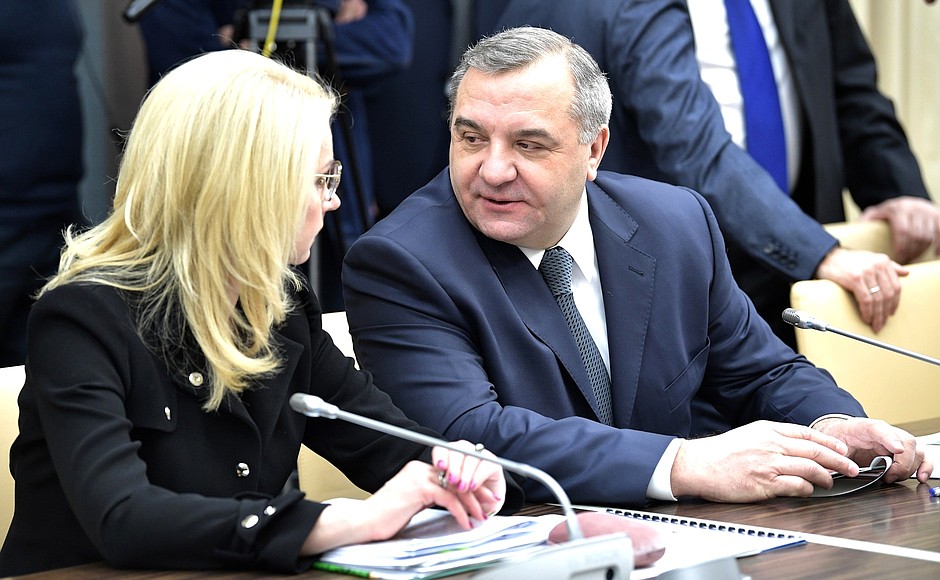
Today over 1,380 production, pharmaceutical and medical organisations are taking part in the pilot programme on 116 medicine titles. By now 7,765,000 packs have been marked.
The first year of the experiment confirmed the efficiency of the system. The introduction of markings does not lead to considerable price hikes. The maximum price increase is up to half a ruble per pack even for the least expensive medicines. At the same time the system makes it possible to identify pharmaceutical distribution related crime. In the first three months, violations worth more than 100 million rubles were identified. Importantly, these were detailed violations linked with the repeated introduction into the market of medicines that were purchased by the state.
The main objective of the second year of the experiment is to scale the labelling system for all regions of the country and connect all medicine supply channels to it, for which there are coordinating centres in each region that are responsible for connecting pharmaceutical and medical organisations. In addition, great work is done by the Ministry of Industry and Trade to provide manufacturers with the necessary equipment.
International experience shows that, given the fact that the volume of the Russian pharmaceuticals markets exceeds 7 billion packs representing over 1.34 trillion rubles, it will take some five years to introduce such a labelling system. At the same time, the first two or three years are spent creating databases, pass-through structured reference guides and providing equipment to manufacturers. We consider it possible to significantly shorten the time frame for the introduction of this system in our country due to the fact that the Uniform Catalogue of Medicines has already been created.
The Federal Tax Service has significant experience in labelling fur products. In addition, in the first quarter of this year, the state corporation Rostec plans to start production of domestic equipment for labelling medicines, which will make it possible to reduce the cost of equipment for manufacturers by 25–30 percent. This further facilitates the task.
The process is enhanced by the fact that the EU countries will launch the mandatory labelling of medicines from January 1, 2019. Expansion of the labelling system will be carried out in accordance with the federal law adopted in December 2017. Mandatory labelling will be introduced on January 1, 2020. At the same time, the Russian Government has the authority and roadmaps to accelerate the introduction of labelling for certain segments of the medicine market. First of all, this concerns expensive medicines in seven nosologies and high price segments of critical drugs. Currently, all project activities are being implemented in accordance with the roadmap.
In conclusion, I would like to say that in the future, as part of the Unified State Health Information System, the two information systems will be linked to monitor, purchase and supply medicines, which will make the oversight system even more efficient and transparent.
Thank you.
<…>
